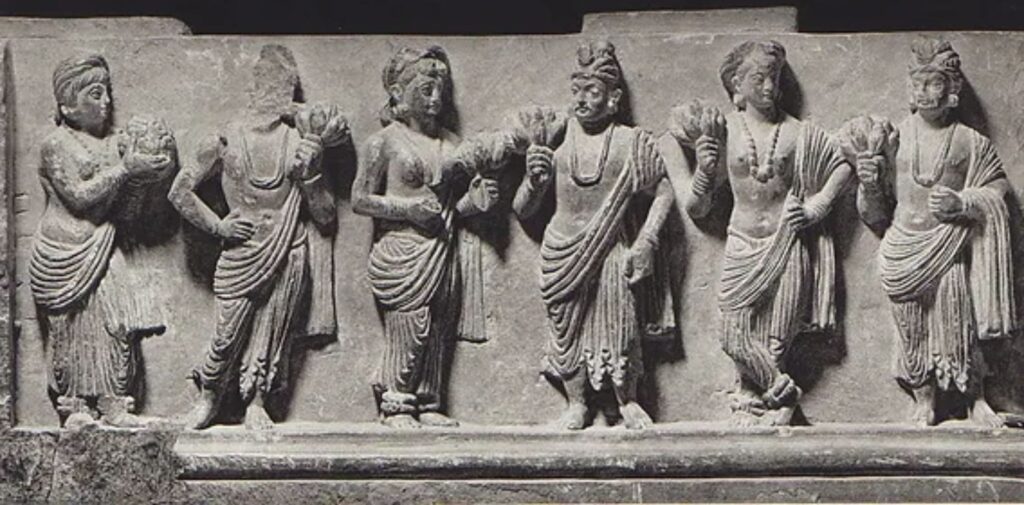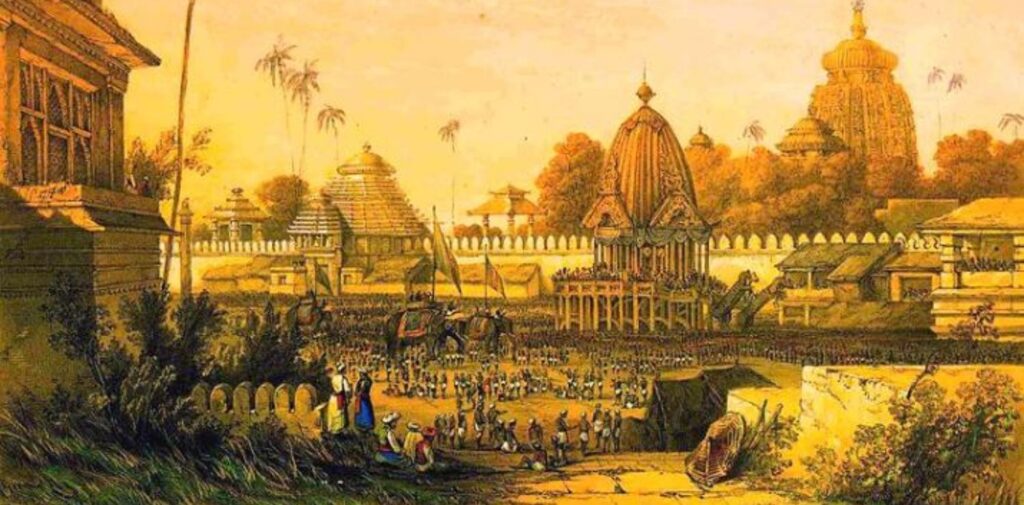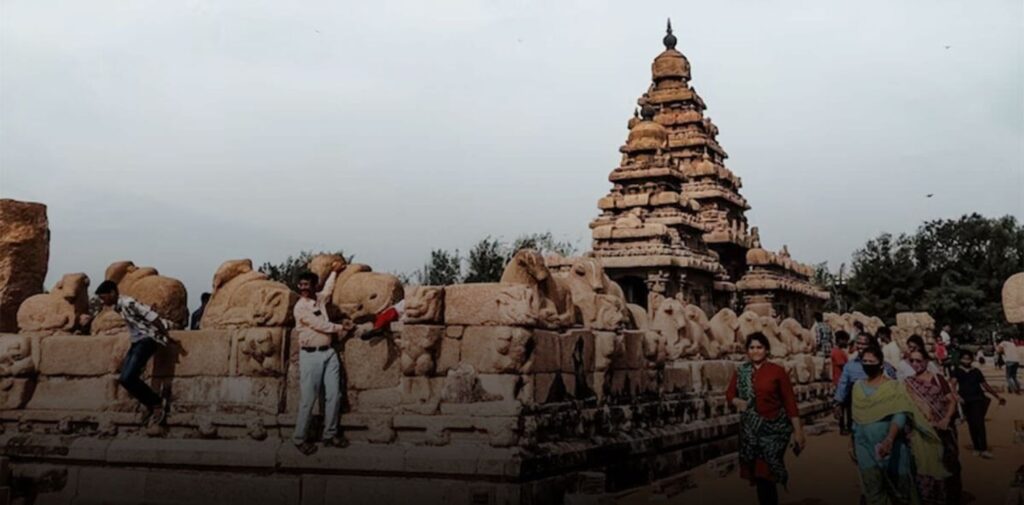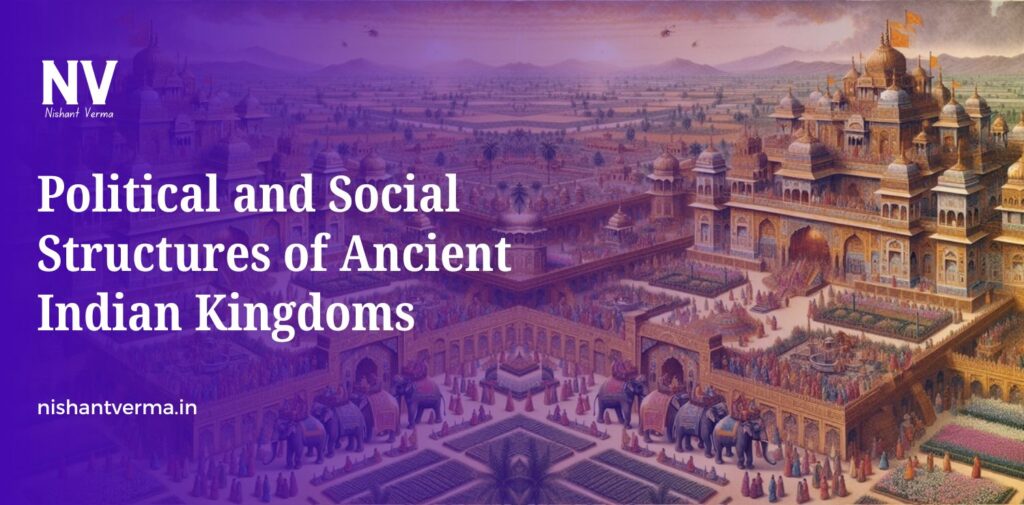Ancient Indian kingdoms, spanning thousands of years, had complex and unique political and social structures that played a significant role in shaping the history of the subcontinent. From the early Vedic period to the mighty Maurya and Gupta empires, the political and social systems evolved to meet the changing needs of the people. This article takes a look at the political and social structures of ancient Indian kingdoms, how they worked, and the impact they had on society.

Political Structure of Ancient Indian Kingdoms
The political structure of ancient India varied from one period to another and from one kingdom to another. However, certain elements were common across many of these kingdoms, and these elements influenced governance and the management of the state.
1. The Concept of Kingship
In ancient India, the political structure often revolved around the concept of kingship. Kings were considered the central authority and the ultimate ruler of a kingdom. Their role was to protect their people, ensure the prosperity of the state, and maintain social order.
- Divine Right of Kings: Many ancient Indian kings were seen as divine or semi-divine figures. Their right to rule was often justified through religious or mythological beliefs. They were believed to be the protectors of Dharma (righteousness) and were responsible for maintaining cosmic order.
- Kingship and Warfare: The king’s power was often tested through wars and military conquest. Ancient Indian kingdoms were frequently engaged in territorial expansion and defence. A successful king could defend the kingdom from invaders and expand its borders.
2. The Maurya and Gupta Empires
Two of the most well-known empires in ancient India were the Maurya and Gupta Empires. Both had strong political systems that allowed them to rule large territories effectively.
- Maurya Empire (321 BCE – 185 BCE): Founded by Chandragupta Maurya, the Maurya Empire had a highly centralized political structure. Chandragupta and his successors, including Ashoka the Great, established a system of provincial administration with governors overseeing different regions. The king was the supreme ruler, but a council of ministers and officials helped with the day-to-day administration.
- Gupta Empire (c. 320 CE – 550 CE): The Gupta Empire is often considered the golden age of ancient India. While the Gupta kings were less centralized than the Mauryas, they still maintained control through a system of local administration. The Gupta Empire allowed greater autonomy to regional rulers while still ensuring the king’s authority over all territories.
3. The Role of Councils and Ministers
While kings held supreme authority, they were often assisted by councils and ministers who helped govern the kingdom. These officials played important roles in military, financial, and administrative matters.
- Mantri Parishad (Council of Ministers): Many kingdoms had a council of ministers who were responsible for advising the king and assisting in decision-making. These ministers could include military leaders, bureaucrats, and religious figures.
- Village Councils and Assemblies: In addition to royal councils, local governance also played an important role. Village councils (or “panchayats”) were common, where elders or influential figures made decisions for the welfare of the village. These assemblies were an important part of the decentralized political system, especially in rural areas.
4. Administration and Law
Ancient Indian kingdoms had well-developed administrative systems to manage their territories effectively.
- Taxation: One of the main responsibilities of the state was to collect taxes. These taxes were used for the upkeep of the kingdom and the military. Land revenue was a major source of income, and tax collectors were appointed to ensure proper revenue collection.
- Law and Justice: Ancient Indian rulers often maintained strict laws and justice systems. Codes like the “Manusmriti,” a Hindu text, provided guidelines for social and legal conduct. Local administrators, as well as royal courts, handled disputes and criminal cases.

Social Structure of Ancient Indian Kingdoms
The social structure of ancient India was deeply influenced by religion, culture, and tradition. It was organized in a way that emphasized hierarchy, division of labour, and the importance of maintaining social order.
1. The Varna System
The Varna system was a key feature of ancient Indian society. This system divided people into four main categories, each with specific duties and responsibilities. These categories, or “varnas,” were:
- Brahmins: The highest social class, consisting of priests, scholars, and teachers. They were responsible for religious rituals, teaching the Vedas (sacred texts), and maintaining spiritual knowledge.
- Kshatriyas: The warrior and ruler class. They were responsible for protecting the kingdom, fighting wars, and maintaining law and order.
- Vaishyas: The merchant and agricultural class. Vaishyas were involved in trade, farming, and commerce. They were responsible for generating wealth for the kingdom.
- Shudras: The labouring class, which served the needs of the higher classes. They were involved in manual labour, such as farming, crafts, and construction.
While the Varna system was supposed to be based on occupation, over time it became rigid, leading to the development of the caste system, which further divided society into many sub-castes.
2. Caste System
The caste system evolved from the Varna system, creating a more complex social hierarchy. People were born into specific castes, and their social status was largely determined by their birth. The caste system led to strict social and occupational segregation, and individuals were expected to follow the duties associated with their caste.
- Untouchables: At the bottom of the caste system were the “Untouchables” or “Dalits.” They were considered impure and were often subjected to harsh social discrimination. They performed tasks that were seen as menial or polluting, such as dealing with animal carcasses or cleaning streets.
- Inter-Caste Relations: Inter-caste marriage and social mixing were generally restricted, and people of higher castes were expected to maintain distance from those of lower castes.
3. Role of Women in Ancient Indian Society
The social structure of ancient India also had specific roles for women, who were often confined to household duties and were expected to uphold the family’s honor.
- Women and Family: Women in ancient India had to follow strict societal norms. They were usually under the guardianship of a father or husband. Their role was primarily domestic, although some women, particularly in royal families, had significant influence and power.
- Religious and Cultural Influence: Some ancient texts, such as the “Manusmriti,” placed women in a subordinate position about men. However, there were instances where women could attain power, such as in the case of queens or influential religious figures.
4. Education and Knowledge
Education in ancient India was primarily focused on religious texts, philosophy, mathematics, astronomy, and arts. The role of teachers (Brahmins) was highly respected, and many kingdoms had schools that taught these subjects.
- Gurukulas: Education was often imparted in “gurukulas,” where students lived with their teachers and learned various disciplines. This system of education was centered around oral transmission of knowledge.
- Scholarship and Art: Ancient Indian kingdoms saw the development of many forms of art, literature, and scientific achievements. These were nurtured in the royal courts and local communities, with kings often patronizing scholars and artists.

Conclusion
The political and social structures of ancient Indian kingdoms were complex and deeply rooted in tradition, religion, and the concept of social order. The political system often centered around the king, who was seen as a divine figure responsible for maintaining peace and prosperity. The social system, based on the Varna and later the caste system, organized society into distinct groups with defined roles and responsibilities. While these structures provided stability, they also created divisions that would impact Indian society for centuries. Understanding these structures helps us appreciate the rich history of ancient India and the lasting influence it has had on the world.




